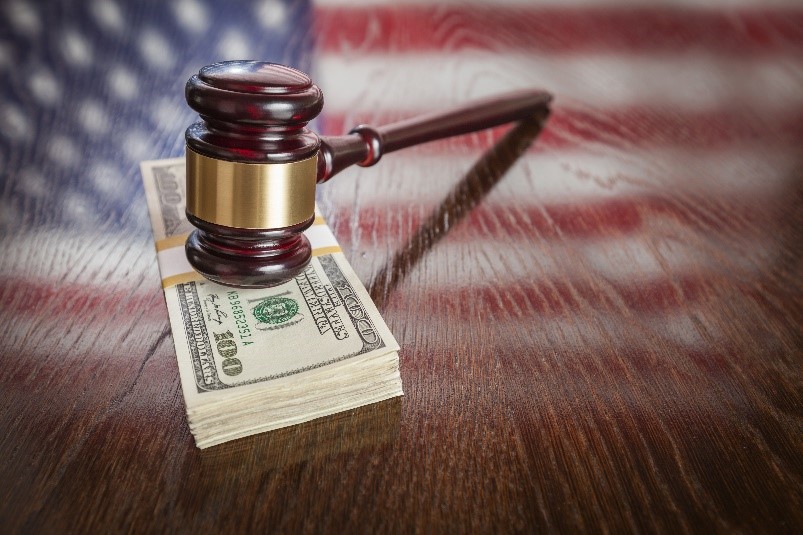By Bruce Leeds, Senior Counsel, Braumiller Law Group
If you go to the Trade tab at CBP.gov one of the featured items on the menu is Priority Trade Issues. There you will find information on Intellectual Property Rights (IPR). This primarily deals with CBP enforcement of trademarks and copyrights.
U.S. copyright and trademark holders lose billions of dollars every year because of imitations and knockoffs, so this is a very important issue to them. As a consequence, CBP has been under pressure to prevent those imitations and knockoffs from entering the country. Lately, CBP has instituted new measures to step up IPR enforcement. Let’s look at trademark enforcement.
There are trademarks and tradenames. They are treated the same for IPR enforcement. A trademark is a logo or symbol placed on a product. A tradename is the unique name associated with a product. As an example, the name “Apple” associated with an electronic product is a tradename. The apple logo is a trademark.
Part 133 of the Customs Regulations covers CBP protection and enforcement of trademarks. The first thing to note is that CBP doesn’t automatically enforce all trademarks. They must first be registered with the U.S. Trademark Office, and then separately registered with CBP. The CBP registration requires the applicant to indicate – among other things – the following:
- The name and address of the trademark owner
- The places where goods bearing the trademark are manufactured
- The name and address of each foreign party authorized to use the registered trademark
The trademark holder will also pay a registration fee and provide facsimile images of the trademark.
Only products bearing a genuine trademark manufactured by an authorized manufacturer may be imported. If an article is imported that is suspected of being a counterfeit version of a registered trademark, CBP will detain the shipment for up to 30 days. Under a recent change to the regulations, CBP will provide information to the trademark owner about the detained products. This includes photographs or images of the detained products. This is to obtain assistance from the trademark owner of whether the products are counterfeit or not. CBP may also provide samples of the detained products to the trademark owner. The trademark owner must post a bond with CBP to indemnify the importer in the event the articles are not counterfeit.
If the products are determined to be counterfeit the shipment will be seized. This means that CBP will take physical possession of the shipment. The imported products may subsequently be destroyed.
The importer may obtain written permission from the trademark owner to release the shipment. In order to obtain permission to obtain release, the importer will likely need to pay a license fee to the trademark owner. This is not a CBP issue, and whether the importer will need to pay a fee and the amount of the fee is subject to negotiation between the parties.
The importer of a shipment detained for trademark infringement may also request to remove or obliterate the trademark. This is done by a petition to CBP. The trademark owner must also approve such removal. Under Part 133.22 of the Customs Regulations removal or obliteration means:
“(i) Grinding off imprinted trademarks wherever they appear;
(ii) Removing and disposing of plates bearing a trademark or trade name”
Simply painting over or putting tape over the trademark is insufficient.
What if the trademark is not registered with CBP? In that event CBP will not enforce the trademark and any shipments will be released. This doesn’t mean that the importer is home free, because the trademark owner may take action against any domestic sales of such articles.
CBP has other tools to facilitate IPR enforcement. The recordation of trademarks can now be done more quickly and easily through a web-based tool called e-Recordation. CBP has a help desk to provide information on IPR enforcement. CBP also encourages IPR owners to report suspected violations via the e-Allegations portal; in fact, many IPR seizures come about as a result of information provided by IPR owners.
That’s not all. CBP Regulatory Audit many conduct a Quick Response Audit to investigate suspected IPR violations. If an importer is subject to an Audit Survey or Comprehensive Audit (AKA Focused Assessment) IPR violations may be on the list of issues subject to audit. Exhibit 5U of the Focused Assessment Manual specifically covers Intellectual Property Rights.
Obviously, IPR protection – including trademark and tradename protection – is an area where importers must be extremely careful. If a mark on a product event remotely resembles a trademark or tradename check it out thoroughly and obtain any required authorization before placing an order and importing the products.

